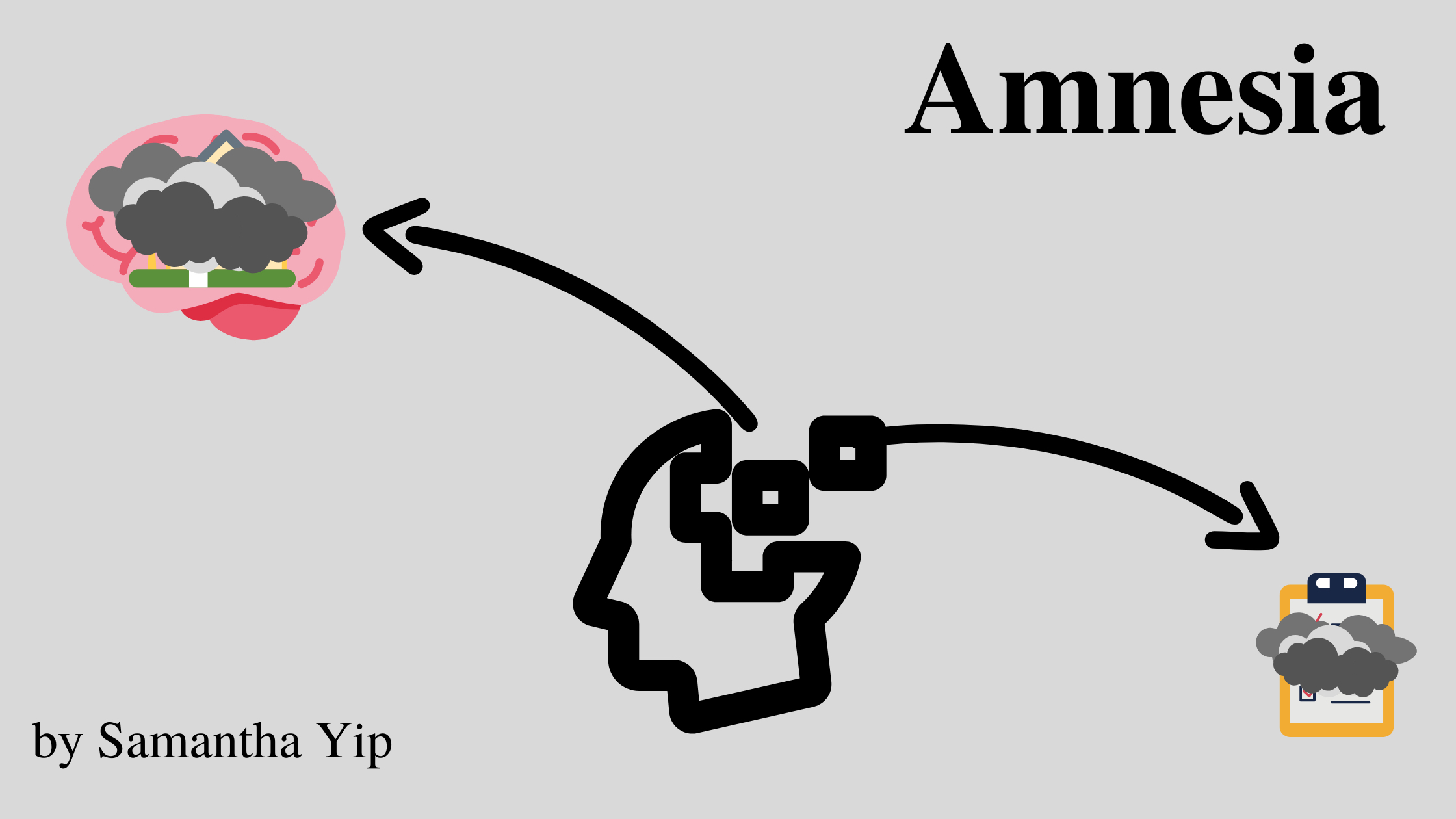 Author: Samantha Yip
Author: Samantha Yip
The main character trips and hits his head or gets whacked in the head while under attack, loses all his memories, and has to rediscover his past and identity. Sometimes the memories come back by the end of the episode, and other times they never do. This is the common trope found in many movies, television shows, and novels – but just how realistic is this?
Amnesia is the loss of memories, such as past experiences or facts. It can be caused by strokes, brain inflammation, long term alcoholism, tumors, seizures, certain drugs, severe head injuries, or the lack of oxygen to the brain. There are two main types of amnesia: retrograde amnesia and anterograde amnesia. Retrograde amnesia occurs when the patient is unable to remember past memories. For instance, he may forget important life events such as the surprise birthday party his friends threw for him when he turned 21, or facts such as the first president of the United States of America. This is the type of amnesia commonly depicted in all our sitcoms where the character forgets his memories after getting hit in the head. While retrograde amnesia is definitely a very real condition, typically a minor whack to the head will not cause someone to forget their entire identity.
Anterograde amnesia occurs when the patient can recall past memories, but is unable to create new memories. For example, they may remember their childhood home and stories from elementary school, but cannot remember any new experiences they encountered after their brain injury. Though anterograde amnesia is rarely depicted in shows and movies, in reality, it is much more common than retrograde amnesia.
How realistic is it when a sitcom character forgets all his memories and then regains them a couple hours later by the end of the episode? You may be surprised to learn that there is a similar condition called transient global amnesia (TGA). Transient global amnesia occurs when the patient suddenly experiences both anterograde and retrograde amnesia for up to 24 hours, though episodes normally only last around four to six hours. After a TGA episode, patients revert back to their normal state without any medication or intervention, though some patients do experience recurring TGA episodes. While scientists have been unable to pinpoint a specific cause for transient global amnesia, it is unlikely to result from a hit in the head like the storylines found in TV shows. Instead, scientists currently hypothesize that transient global amnesia may be caused by migraines, lack of blood flow to the brain, problems with venous circulation, or seizures. TGA is a very rare condition and only affects about 5 in 100,000 people each year, and so it would be unlikely for someone to come across a case just in day to day life.
Over the past years, amnesics have been key in helping scientists to understand how memories are formed and stored. Through a variety of experiments testing the memory recall abilities of patients afflicted with retrograde and anterograde amnesia, scientists have discovered that a section of the brain called the medial temporal lobe – particularly the hippocampus – is crucial to the creation of new memories. When the hippocampus is damaged, many patients lose the ability to form new memories. For instance, in a patient named HM, parts of his medial temporal lobe – including his hippocampus – were removed in a medical procedure in an effort to reduce his seizures. After the surgery, HM’s personality and cognitive abilities remained the same, but he was now unable to create new memories. In other words, the removal of his hippocampus led to anterograde amnesia, thus showing that the hippocampus plays a crucial role in memory formation. Through the early research on amnesic patients and subsequent studies on animals, studying amnesia has rapidly advanced memory research in the past decades.









